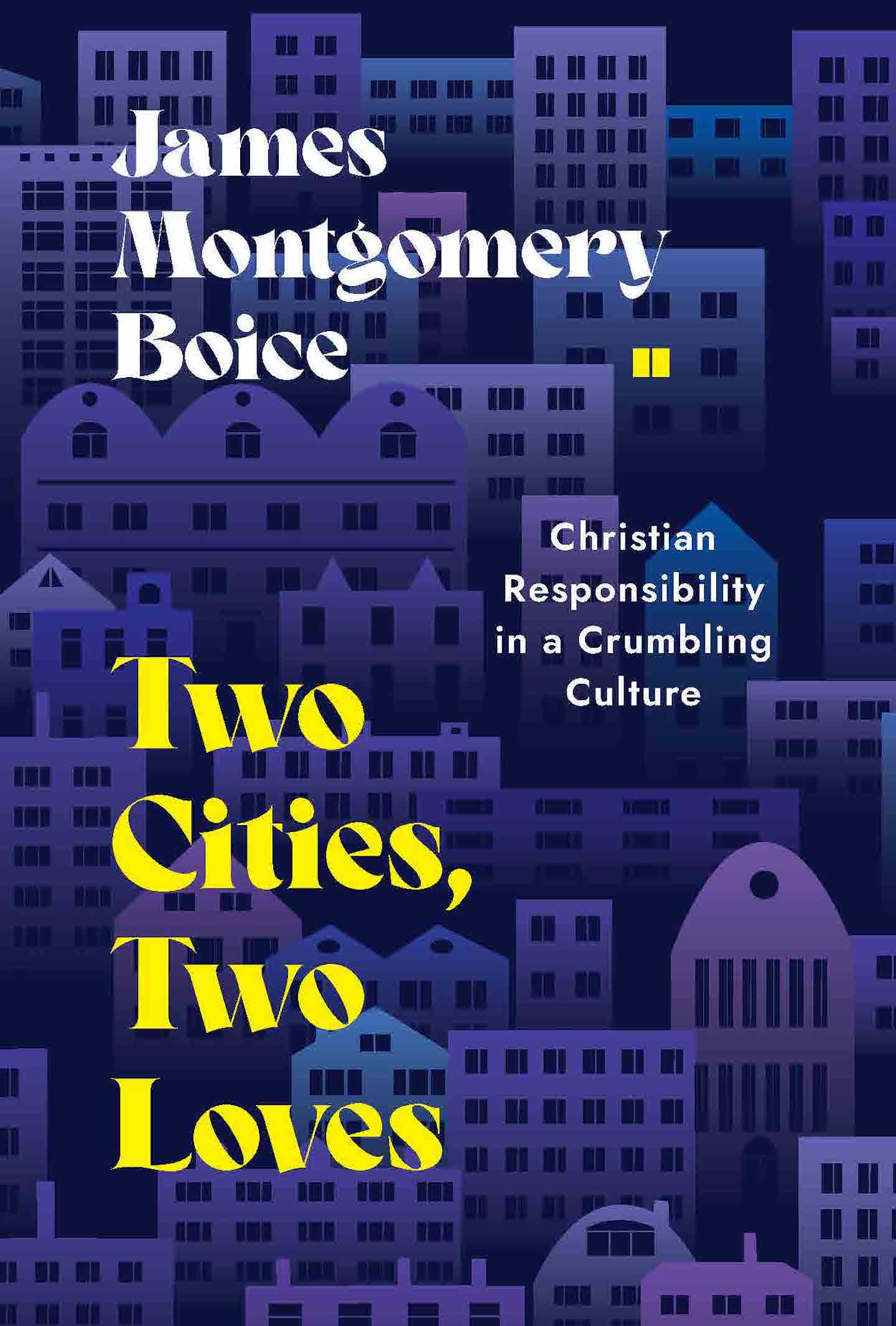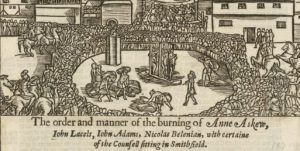Storytellers love telling tales about parallel worlds hidden behind our real world.
The Matrix movies is a popular example, where the protagonist Neo must choose between living in a falsified reality much like modern society, or the harsh truth of a decrepit and violent world of killer machines. Then there’s Alice’s Adventures in Wonderland, The Chronicles of Narnia, the Harry Potter series, and the current bestseller by Evie Woods, The Lost Bookshop.
Living between two worlds is not just a fictional interplay for Christians—it’s a biblical reality. There is the sinful world we live in now, and the hidden and future kingdom of Christ, which we’re already citizens of and called to set our hearts on (Matt 6:19–20; Phil 3:20–21; Col 3:1–2). So how do we live calmly in one while awaiting expectantly for the other?

Two Cities, Two Loves: Christian Responsibility in a Crumbling Culture
James Montgomery Boice
Two Cities, Two Loves: Christian Responsibility in a Crumbling Culture
James Montgomery Boice
Christians belong to God’s kingdom but live in earthly realms that pursue different loves and priorities. Boice highlights the dangers we face while offering practical, biblical wisdom for our sojourn.
Answering this question is the late Reformed pastor and theologian James Montgomery Boice’s re-released and revised 1996 work, Two Cities, Two Loves. It returns into a suddenly crowded market of faith books that promise to cure cancel culture, post-Christian culture, burnout culture, deceptive culture, and dysphoria culture. Boice stands head and shoulders above many of them, however, because he wasn’t responding to just the machinations of his time. His Two Cities, Two Loves reminds us that Satan’s schemes and God’s conquering goodness are nothing new.
Worlds Divided
Boice openly admits that Two Cities, Two Loves is an update of Saint Augustine’s The City of God. He upholds Augustine’s idea that there are two cities: the city of man and the city of God. The city of man is our earthly society throughout history, which is wickedly opposed to God (74), and the city of God is the church, composed of God’s elect. “The former is destined to pass away. The latter is blessed by God and is to last forever” (3).
Boice traces the history of this two-city concept from the Fall through Cain, Seth and the two Enochs, and up to Abraham, before exploring the historical cities of Ninevah, Babylon and Jerusalem, and why the Bible makes mention of them. The author’s skill as an accessible scholar and preacher are on full display here as he masterfully combines history and theology to push his big theme: all kingdoms sprouting from the city of man will always fail and fall because they all attempt to build civilisation without God (60).
For example, the doomed King Nebuchadnezzar, rather than giving glory to God when he looked out across his own city of man, pronounced: “Is not this the great Babylon I have built as the royal residence, by my mighty power and for the glory of my majesty?” (Dan 4:30 NIV). Such sin is still prevalent today, Boice asserts. “This is the cry of the secular humanist. It describes life as of man, by man, and for man’s glory” (67–68).
Caught Between Worlds
Boice was disturbed at what he was seeing during the last years of his life. He believed that American morality, families and schools were in rapid decline, and that evangelicals had fared poorly in relating to culture to the point of being negligible (xi–xii). However, Christians mustn’t react by adopting extremes: either withdrawing completely from society (because that changes nothing), adopting liberal Christianity (because that surrenders to the world) or pursuing Christian nationalism (building another worldly kingdom destined to fail) (102–105).
Boice argues that Christians are citizens of both cities, and therefore must exhibit a measure of both “responsibility and realism” (114). We are to work responsibly for the world’s improvement, but at the same time expect realistically that this world will continue to be sinful and corrupted until Christ’s return. That means participating in secular life rather than shooting from “the sidelines at secular people and at what secular people are doing” (114).
Boice draws on American theologian Michael Horton’s Beyond Culture Wars (1994) when he strongly states that evangelicals currently offer little in cultural battles:
first, because they have not participated in culture enough for their views about it to be taken seriously, and second, because they do not know the Bible or their own theology well enough to be able to give a distinctly Christian contribution if they did. (115)
The Rediscovered World
The stakes are high. Abandonment of biblical Christianity in some quarters has only produced a “pitiful state of uncertainty and insecurity in church leaders” (107). “People are not attracted to a church that does not know what it believes” (108). Imposing our own moral code on others, criminalising sinful behaviour and creating nice ghettos for ourselves is only going to backfire, Boice believes (123).
In other words, the city of God is in danger of having little impact on the city of man. Boice calls today’s church to embody six principles characteristic by John 17—joy, holiness, truth, mission, unity, and love. Too much emphasis in the modern church is on growing attendances, political structures and laws. Jesus, however, was focussed on the glorification of God, and the character and conduct of those by whom God would be glorified (173–174). People who live in the city of God cannot withdraw from the culture and expect the culture to change.
New World Order
The revised edition of Two Cities, Two Loves is easy to digest, with incredible riches in every chapter—too many to explore here. However, some clangers have made it through including this one: “[Emperor] Constantine had converted to Christianity after his victory at the Milvian Bridge in 312BC” (xiv). That’s some feat, considering Jesus hadn’t been born, the Roman Empire hadn’t been founded, and the Milvian Bridge didn’t exist. Nitpicking, yes? But this is a revised edition.
There’s also the assertion that in Mark 4:35–41, Satan tries to destroy Jesus with the storm on the Sea of Galilee, forcing Jesus to rebuke it (7). Some commentators run with that line, but Scripture such as Psalm 135:7 makes it clear that God has global control of the weather. The point here is exactly what the disciples declare: “Who then is this, that even the wind and the sea obey him?” (Mk 4:41). Jesus is God. He is in control.
Lastly, for such a big picture work with timeless truths, it’s incredibly American-centric. The revision needed to trim some of the unnecessary references, which would have only strengthened it and made it more pressing for the city of God at large.















